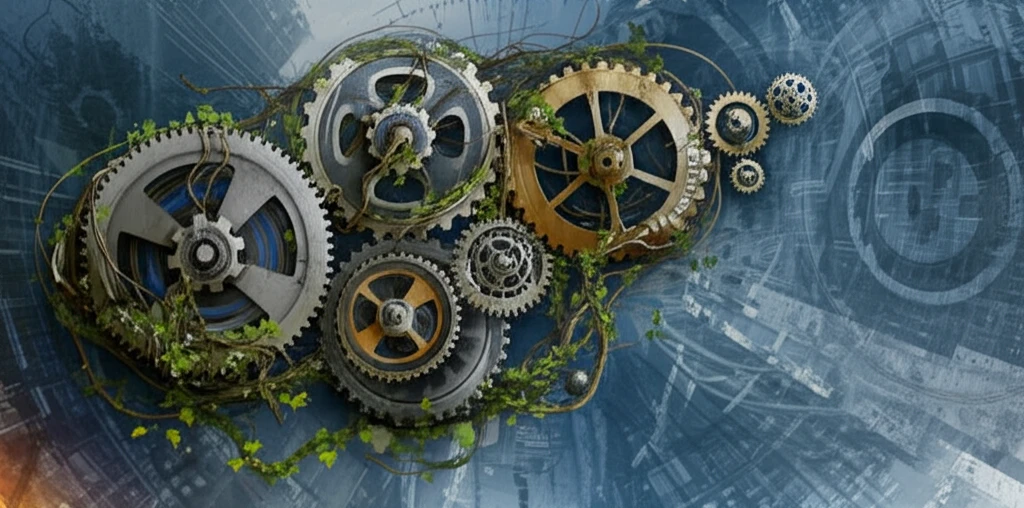
Decoding the Future: How Vintage Capital Models Shape Economic Growth
"Explore how incorporating vintage capital and human capital development into economic models provides a more realistic understanding of long-term growth and investment dynamics."
The quest to understand economic growth has led economists down many paths, from examining technological advancements to studying the role of human capital. One particularly insightful approach involves the concept of "vintage capital," which recognizes that the age and characteristics of capital investments significantly influence economic outcomes. This idea, explored by Jess Benhabib, introduces a more nuanced view of how economies evolve over time.
Benhabib's work builds upon earlier research by Benhabib and Rustichini, integrating endogenous growth models with the idea of vintage capital and human capital development. Endogenous growth models emphasize that economic growth is driven by internal factors, particularly investments in human capital and technology. By adding the vintage capital dimension, the models become more realistic, acknowledging that not all capital is created equal—some investments are more productive than others due to their age or embodied technology.
Imagine an economy where new machines are constantly being introduced, each more efficient than the last. Over time, older machines become obsolete, impacting overall productivity. This is the essence of vintage capital. Combining this with the concept of human capital—the skills and knowledge workers possess—creates a powerful framework for analyzing economic growth. Unlike models that treat all capital as a homogenous mass, vintage capital models provide a far more detailed picture of economic dynamics.
What is Vintage Capital and Why Does It Matter?

In traditional economic models, capital is often treated as a single, undifferentiated stock. However, this simplification overlooks a crucial aspect of reality: capital investments depreciate and become technologically outdated over time. Vintage capital models address this by explicitly considering the age and efficiency of different capital vintages.
- Realistic Depreciation: Acknowledges that capital wears down and becomes obsolete, impacting productivity.
- Technological Progress: Captures the impact of new technologies embodied in newer capital.
- Investment Decisions: Helps understand how firms decide when to invest in new capital versus maintaining older equipment.
- Policy Implications: Provides insights for policies that encourage investment in modern, efficient capital.
The Future of Economic Modeling
Vintage capital models offer a richer, more realistic framework for understanding economic growth and investment. By acknowledging the heterogeneity of capital and the crucial role of human capital, these models provide valuable insights for policymakers and businesses alike. As economies continue to evolve, incorporating these nuances will be essential for making informed decisions and fostering sustainable prosperity. The next step involves integrating these models with real-world data to test their predictions and refine their accuracy, paving the way for more effective economic strategies.
